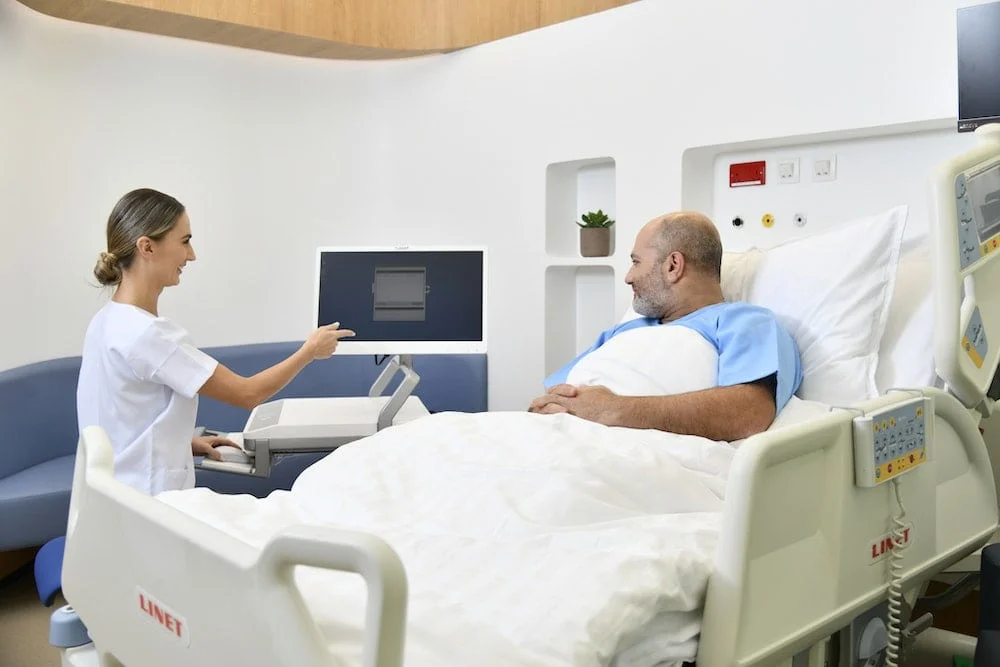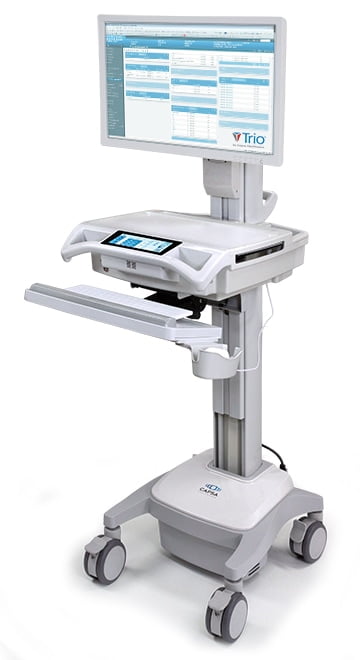
Electronic health records (EHRs) are an essential aspect of modern-day healthcare. They allow medical professionals to access patient information quickly, share information across different healthcare providers, and improve patient outcomes. However, many organizations struggle with EHR implementation and maintaining an electronic health record system.
How can you successfully combat barriers to EHR implementation at your healthcare facility? Read on for six practical tips for overcoming EHR implementation obstacles and improving your overall patient records processes.
Despite the many benefits of EHRs, implementing them can be challenging for many facilities. Three of the most common barriers to EHR implementation include:
Implementing a new EHR system can be a significant expense. Though the cost of implementing EHRs varies based on the size of your facility, the cost of hardware, software, and training is understandably overwhelming and can cause hesitation.
Furthermore, it can take time to realize any financial benefit from your use of EHRs, so implementation can be a daunting task for hospitals who may be uncertain about the return on investment for EHR implementation.
Introducing a new EHR system can disrupt established routines and require your medical staff to learn new processes. The implementation process can be time-consuming and require significant resources, further straining your hospital’s busy schedule. These compounding requests on your staff can lead to frustration and resistance.
Aside from the cost of purchasing and installing a new system, training staff on how to use the new system or hiring new staff to facilitate the implementation process can be a major time and resource drain.
With the increasing use of cloud-based EHRs, there is a growing concern about the privacy and security of patient information. EHRs allow for easy and efficient sharing of medical information among healthcare providers. However, they also introduce new risks to the security and privacy of patient medical records.
Unauthorized access to sensitive medical information can result in medical identity theft or fraudulent activities, which is a major concern for patients. In addition, patients may worry about the confidentiality of their information, as anyone with system access can view it.
Such concerns become a barrier to EHR adoption in your practice as you strive to balance the benefits of EHRs with patients’ privacy and security concerns.

As you consider adopting EHRs into your practice, it’s important to have a clear EHR implementation plan to overcome barriers and achieve successful EHR adoption. Embracing new technology can be overwhelming, but following these six steps can ensure a smoother transition and reap the benefits of EHRs for your patients and your hospital.
Creating a roadmap with an implementation timeline and reasonable objectives can make the EHR implementation process more manageable.
To ensure a successful EHR adoption, it’s recommended to break down the process into an EHR implementation checklist, such as:
Creating implementation plans may take time and require adjustments, but keeping realistic expectations and a positive attitude can go a long way in successfully integrating this new technology into your practice.
Developing an EHR implementation team with clearly defined roles is crucial to your success. Start by selecting team members who are knowledgeable about EHRs and their potential benefits for your practice.
It is also helpful to have team members who are experienced in project management, as they can oversee the implementation process and ensure that goals are being met on time.
Assign each team member a clearly defined role, such as:
By clearly defining each team member’s responsibilities, you can ensure that everyone is working towards the same goal and that the implementation process runs smoothly.
Planning and setting an EHR implementation budget can be an intimidating process. However, it is crucial to analyze your current expenses and forecast future ones to determine a feasible budget accurately.
Take into consideration all the costs that go into implementation, including:
It is important to be realistic with your budget while also allowing room for unexpected expenses to ensure the most success.
Once you have your roadmap, implementation team, and budget in place, it is time to migrate all electronic patient records and medical records within your current EHR system. To do this, you must work closely with your EHR vendor to ensure proper data migration.
Data migration often involves several steps, such as:
It is also important to communicate with your patients about this process and ensure they understand the benefits of EHRs. Doing so will allow you to successfully make the transition to your new EHR system and improve efficiency, patient satisfaction, and quality of care in your practice.
A simple and robust staff training program ensures that your employees are fully knowledgeable, confident, and competent regarding your new EHR system.
Begin by assessing your staff’s current level of computer literacy and identify any knowledge gaps that may impede successful implementation. It is important to make the training program easily accessible and tailored to the needs of individual staff members. Consider offering both online and in-person training sessions.
You should also provide additional training, ongoing support, and guidance to minimize any disruption to your workflows and patient care.
You can utilize various metrics to implement EHR effectively. One key metric is user adoption, which refers to the rate at which you embrace and use EHR.
To measure user adoption, you can analyze data such as:
By monitoring these metrics, you can identify any issues with adoption and make necessary adjustments to workflow, staff training, and system usability. You can also apply these metrics to measure the success of EHR implementation and make data-driven decisions to improve the system continuously.
Consistently reviewing, revising, and trying new adoption strategies will ensure you enjoy ongoing success with EHR implementation.

With the right technology, perseverance, and a commitment to delivering high-quality care to patients, you can successfully implement EHR and take advantage of its benefits. Capsa Healthcare has the perfect mobile computing solution if you’re seeking ways to streamline your EHR implementation process. We provide high-quality, durable EHR carts that integrate seamlessly with your existing EHR systems. These mobile workstations let you easily input vital patient information no matter where you are.
See the latest computing workstations from Capsa, including their new Tryten monitor and tablet carts, at the upcoming HIMSS 2023 global health conference. Schedule a time to visit us or stop by booth #2844 for a demonstration.